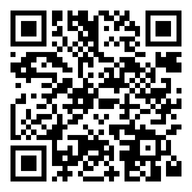
 POSNA.org
POSNA.org
Toe walking is a pattern of walking where people walk on the balls of their feet without the heels touching the ground. It usually involves both feet but can more rarely involve one foot. Children who toe walk on a single foot may have a difference in how their brain/nerves/muscles work or how their bones are aligned. Single-sided toe walking at any age requires further evaluation to look for a cause. Causes of one-sided toe walking can include clubfoot, leg length difference, hip dislocation, cerebral palsy, or other neuromuscular condition. In some cases, even when both feet are up on the toes, there can be an underlying cause such as Charcot-Marie Tooth, autism spectrum disorder, or cerebral palsy. Developmental delays, language delays, sensory differences, and autism spectrum disorders may also be associated with toe walking.2,3
Idiopathic toe walking is the term used for toe walking without an underlying cause, also known as habitual toe walking. Families and caregivers may be concerned that toe walking may lead to significant problems later in life. Although persistent toe walking can cause relatively minor problems like callouses on the skin, muscle strains/overuse in the legs, and potentially stress fracture of the feet or difficulty with balance, no major long-term complications have been scientifically documented. Idiopathic toe walking resolves in the majority of children in the first decade of life1.
Idiopathic toe walking is often present from around the time the child first starts to walk, it less commonly appears after years of normal walking patterns. When just the balls of the feet touch the ground, children may trip and fall more frequently and have balance and coordination difficulties. Toe-walkers may complain of pain or fatigue in their legs, especially in the calf region. They may be able to stand with their heels flat on the ground when prompted but when walking or running they are typically on the balls of their feet. Some children may only toe walk on certain surfaces or when barefoot.
A full history and physical examination should be conducted including birth history and developmental history. During the physical examination your doctor will watch your child stand, walk, and run to assess the foot position during these activities. They will also evaluate the range of motion of the hips, knees, and ankles. Muscle strength, muscle tone, reflexes and sensation will also be assessed.
Young children who toe walk on both feet (under the age of approximately 5) and have a normal physical exam inclusive of normal range of motion, typically do not need treatment or further evaluation, as the condition is most likely to improve without treatment. Toe walking can be a stage or normal gait development in the toddler years. If there are muscle or nerve differences noted on the physical exam, or toe waking is present in older children, referral to a neurologist or neurodevelopmental pediatrician is recommended to assess for a possible underlying neuromuscular or developmental cause.
By the age of 10, approximately 80% of children who ever toe-walked, are no longer toe walking, without treatment1. Physical therapy and shoe inserts have not been scientifically proven to cure toe walking. Commonly accepted treatments for toe walking in young children include a 3-6 month course of daytime articulated ankle-foot-orthoses (plastic braces) during the school day to be removed for recess/gym/athletic activities, night-time solid stretching plastics braces to remain in-place throughout sleeping, or serial (multiple) stretching casts typically changed every 2weeks for total 6 weeks. Whether wearing plastic braces or stretching casts, the treatment proves most helpful in targeting tight Achilles and calf muscles. In the option of serial casting, these are walking casts typically changed every 2 weeks, with greater motion gained with each cast change and then often followed by physical therapy for a number of weeks if temporary stiffness or weakness if present in the legs. Botulinum toxin A (Botox) injection to the calf muscles may be used in some cases, combined with serial stretching casts or plastic braces, when the diagnosis for toe walking is of neuromuscular origin. In older children or children for whom conservative treatment has not worked, surgery may be recommended. This may require lengthening the Achilles tendon at the level of the mid-calf or at the ankle, depending on how tight the Achilles tendon is. Patients with an underlying sensory, neurodevelopmental or neuromuscular cause for their toe walking may benefit from ankle-foot-orthoses (AFO) bracing which helps to encourage the heel down and can limit the Achilles from getting tight again.
Toe walking is not known to cause serious long-term problems but may cause skin callouses, stress fractures, foot or calf pain, muscle fatigue and may contribute to poor balance, tripping and falling. The majority of toe walking resolves by 10 years of age. Articulating AFOs or serial cast treatment is often initiated around 4-6 years of age if idiopathic toe walking has not resolved. For those patients who require surgical treatment for their toe walking, studies suggest improvement in the walking pattern, and low risk of recurrence. Patients with a sensory disorder, autism, or a neuromuscular cause for their toe walking have a greater risk of persistent toe walking, or return of toe walking after treatment. Patients with an underlying cause for their toe walking are more likely to require long term bracing and follow up visits with their pediatric orthopedic surgeon.
REFERENCES
1. Engstrom P, Tedroff K. Idiopathic Toe-Walking: Prevalence and Natural History from Birth to Ten Years of Age. J Bone Jt Surg. 2018:640-647.
2. Engström P, Van’T Hooft I, Tedroff K. Neuropsychiatric symptoms and problems among children with idiopathic toe-walking. J Pediatr Orthop. 2012;32(8):848-852. doi:10.1097/BPO.0b013e31826bec08
3. Ruzbarsky JJ, Scher D, Dodwell E. Toe walking: Causes, epidemiology, assessment, and treatment. Curr Opin Pediatr. 2016;28(1):40-46. doi:10.1097/MOP.0000000000000302
Condition QR Code:
